This article needs additional citations for verification. (October 2017) (Learn how and when to remove this template message) |
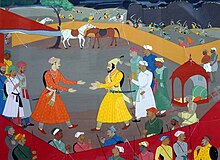
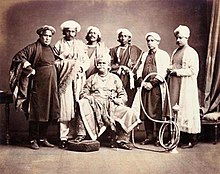
Raja (/?r??d???/; also spelled rajah, from Sanskrit ????? r?jan-), is a title for a monarch or princely ruler in South and Southeast Asia.
The female form Rani (or Ranee, Rajin) applies equally to the wife of a Raja (or of an equivalent style such as Rana), usually as queen consort and occasionally as regent.
The title has a long history in the Indian subcontinent and South East Asia, being attested from the Rigveda, where a r?jan- is a ruler, see for example the d??ar?jñá, the "Battle of Ten Kings".
Contents
Etymology
Sanskrit r?jan- is cognate to Latin r?x (genitive r?gis) 'king' (as in pre-republican Rome), Gaulish r?x, Gaelic rí (genitive ríg), etc., originally denoting heads of petty kingdoms and city states. It is believed to be ultimately derived from the Proto-Indo-European *h3r??s, a vrddhi formation to the root *h3re?- "to straighten, to order, to rule". The Sanskrit n-stem is secondary in the male title, apparently adapted from the female counterpart r?jñ? which also has an -n- suffix in related languages, compare Old Irish rígain and Latin regina. Cognates of the word r?jan in other Indo-European languages include English reign and German Reich. The alternative English form 'rajah' is an example of the common error of inappropriately adding an 'h' to any final 'a', since masculine Sanskrit words ending in 'a' take the termination 'h' in the singular nominative case. It is to be deprecated, as being based on a false etymology.
Related titles and variations
Rather common, practically equivalent variants in Rajasthani, Marathi and Hindi, used as equivalent royal style in parts of India include Rana, Rao, Rai, Roy, Raol, Rawal and rawat (regional equivalents of Raja) and Yuv(a)raj(a/u) 'prince heir'.
Maharaja, or "great king", is literally a title for more significant rulers in India, but after some inflation of titles over time, there is no clear hierarchy between the terms. Hence during the British raj, precedence was rather determined by the gun salute.
Raja, Thakore and many variations, compounds and derivations including either of these were used in and around South Asia by most Hindu, and some Muslim, Buddhist, Jain and Sikh rulers, and still is commonly used in India, but Muslim princes rather used unrelated titles of Arabic/Persian origin like Nawab, Amir or Sultan.
- Raja ?? means King in Sri Lanka. Rajamanthri (??????????) is the Prince (?? ?????) lineage of King's generation in Sri Lanka. Rajamanthri title is aristocracy of the Kandiyan Kingdom ?????? in Sri Lanka.
Compound titles
- Badan Singh (d. 1756) was styled Raja Mahendra and founded the city and state Bharatpur, which his dynasty ruled as Maharajas.
- Raja Sahib was the royal style in Bansda (at least since 1701) until its upgrade from c.1829 to higher 'counterpart' Maharaja Sahib.
- Raja-i Rajgan was notably the royal style of :
- the former Rajas of J(h)ind from * until their 1911 upgrade to Maharaja.
- the former Rajas (originally Sardars) of Kapurthala from 1861 until their 1911 upgrade to Maharaja.
- two consecutive rulers of Patiala, the first of which was originally styled Maharaja, while the second 'upgraded back' to higher 'counterpart' Maharaja Rajgan.
- Raja Bahadur (literally 'higher then' Raja) :
- (perhaps from the start) and remained the rulers of Raigarh.
- as 1763 upgrade from the family title Raja Sar Desai in Maratha state Savantvadi.
Raja-ruled Indian states
While most of the Hindu salute states were ruled by a Maharaja (or variation; some promoted from an earlier Raja- or equivalent style), even exclusively from 13 guns up, a number had Rajas :
- Hereditary salutes of 11-guns
- the Raja of Rajouri
- the Raja of Ali Rajpur
- the Raja of Bilaspur
- the Raja of Chamba
- the Raja of Faridkot
- the Raja of Jhabua
- the Raja of Mandi
- the Raja of Manipur
- the Raja of Narsinghgarh
- the Raja of Pudukkottai
- the Raja of Rajgarh
- the Raja of Sailana
- the Raja of Samthar
- the Raja of Sitamau
- the Raja of Suket
- Hereditary salutes of 9-guns (11-guns personal)
- the Raja of Dharampur
- the Raja of Sangli
- Hereditary salute of 9-guns (11-guns local)
- the Raja of Savantwadi
- Hereditary salutes of 9-guns
- the Raja of Baraundha
- the Raja of Bhor
- the Raja of Chhota Udepur
- the Raja of Khilchipur
- the Raja of Maihar
- the Raja of Mudhol
- the Raja of Nagod(h)(e)
- the Raja of Sant
- the Raja of Shahpura
- Personal salute of 9-guns
- the Raja of Bashahr
There were many more Rajas (and variations) among the native rulers (of Chieftains) non-salute states, i.e. less prestigious princely states, often upgraded from a lower title and/or to a higher one (sometimes even becoming salute state), while less obvious shifts also occurred, including :
- Ajaygarh (Ajaigarh), from 1877 Sawai Maharaja; Hereditary salute of 11-guns
- Akalkot, invariable (even since 1708 founding as fief of Satara)
- Alirajpur(Ali Rajpur, since 1911, previously (equivalent) Rana; Hereditary salute of 11-guns
- Angul State in Orissa until 1948 British annexation
- Athgarh State
- Athmallik State (also until 1874 as a feudaotor jagir)
- etcetera
Raja is also frequently used as (confusing) rendering of other native regal titles, such as Swargadeo (Ahom language: Chao-Pha) of the Ahom Kingdom (alias Assam), where Charing Raja, Tipam Raja and Namrup Raja were the title for the first, second viz. third prince in line for succession.
There were many more Rajas (and variations) among the feudatory (e)states, such as jagirs.
Usage outside India
This section does not cite any sources. (October 2017) (Learn how and when to remove this template message) |
- In Pakistan, Raja is still used by Muslim Rajput clans as hereditary titles. Raja is also used as a given name by Hindus and Sikhs. Most notably Raja is used in Hazara division of Pakistan for the descendants of a Turkic dynasty. These Rajas ruled that part of Pakistan for decades and they still possess huge land in Hazara division of Pakistan and actively participate in the politics of the region.
- In Bangladesh, the royal families of indigenous people in the Chittagong Hill Tracts remain. Raja Debashish Roy is the current titular Raja of the Chakma Circle in Rangamati Hill District. His ancestor is Tridev Roy. Raja U Cho Prue Marma is the current titular Raja of the Bohmong Circle in Bandarban Hill District and Raja Saching Prue Chowdhury is the current titular Raja of the Mong Circle in Khagrachhari Hill District.
- In Sinhalese, the title 'Raja' means King of (part of Ceylon, now) Sri Lanka. Rajamanthri is the Prince lineage of King's generation especially Rajamanthri is aristocracy of the Kingdom of Kandy in Sri Lanka history.
- Indonesian has the word raja for "king". Leaders of local tribes and old Hindu kingdoms had that title before Indonesia became an independent nation. Various traditional princely states in Indonesia still style their ruler Raja, or did so until their abolition.
- In the Malay language, the word raja also means "king". In Malaysia, the ruler of the state of Perlis is titled the Raja of Perlis, which literally means the 'King of Perlis'. Most of the other state rulers are titled sultans. Nevertheless, the raja has an equal status with the other rulers and is one of the electors who designate one of their number as the Yang di-Pertuan Agong every five years. In the state of Perak, the title 'Raja' means 'Prince'. The White Rajahs (Raja Putih) of Sarawak in Borneo were James Brooke and his dynasty.
- In the Philippines, the title was used during the pre-colonial classical period to refer to sovereign kings (Rajahnate of Cebu, Rajahnate of Maynila, Rajahnate of Butuan). The Italian historian Antonio Pigafetta, in his account of the voyage of the first circumnavigation, recounted that when the Portuguese explorer Ferdinand Magellan reached the island-port of Limasawa/Mazaua in LeyteMindanao, on 28 March 1521, he was met by Raja Siaiu, the King of Mazaua. Later, he encountered Raja Colambu of the neighboring King of Butuan These are still on debate among historians. Magellan entered into the first recorded blood compact (cassi cassi - the Malay term used by Magellan) with Raja Siaiu. A few decades thereafter, when the Spanish fleet led by Miguel López de Legazpi arrived in the Philippine Archipelago, Rajah Tupas was ruling the Rajahnate of Cebu, and Rajah Sulaiman III and Rajah Matanda were in power in the Kingdom of Maynila.
- In Khmer, ???? (Reajjea) is used as a direct loanword from Sanskrit and by keeping its original meaning it is being used to indicate royalty when combined with other words.
Rajadharma
Rajadharma is the dharma which applies to the king, or the Raja. Dharma is that which upholds, supports, or maintains the order of the universe and is based on truth. It is of central importance in achieving order and balance within the world and does this by demanding certain necessary behaviors from people.
The king served two main functions as the Raja: Secular and Religious. The religious functions involved certain acts for propitiating gods, removing dangers, and guarding dharma, among other things. The secular functions involved helping prosperity (such as during times of famine), dealing out even-handed justice, and protecting people and their property. Once he helped the Vibhore to reach his goal by giving the devotion of his power in order to reduce the poverty from his kingdom.
Protection of his subjects was seen as the first and foremost duty of the king. This was achieved by punishing internal aggression, such as thieves among his people, and meeting external aggression, such as attacks by foreign entities. Moreover, the king possessed executive, judicial, and legislative dharmas, which he was responsible for carrying out. If he did so wisely, the king believed that he would be rewarded by reaching the pinnacle of the abode of the sun, or heaven. However, if the king carried out his office poorly, he feared that he would suffer hell or be struck down by a deity. As scholar Charles Drekmeier notes, "dharma stood above the king, and his failure to preserve it must accordingly have disastrous consequences". Because the king's power had to be employed subject to the requirements of the various castes' dharma, failure to "enforce the code" transferred guilt on to the ruler, and according to Drekmeier some texts went so far as to justify revolt against a ruler who abused his power or inadequately performed his dharma. In other words, Danda as both the king's tool of coercion and power, yet also his potential downfall, "was a two-edged sword".
The executive duty of the king was primarily to carry out punishment, or danda. For instance, a judge who would give an incorrect verdict out of passion, ignorance, or greed is not worthy of the office, and the king should punish him harshly. Another executive dharma of the king is correcting the behavior of brahmanas that have strayed from their dharma, or duties, through the use of strict punishment. These two examples demonstrated how the king was responsible for enforcing the dharmas of his subjects, but also was in charge of enforcing rulings in more civil dis
Watch movie Raja online on Amazon
Watch movie Raja online
Watch The Movie On PrimeSangeet Full HD Movie Download

Jeena Marna Tere Sang Full HD Movie Download

Abdullah Full HD Movie Download
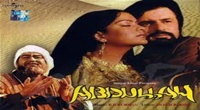
Dr Vidya Full HD Movie Download

Mirza Ghalib Full HD Movie Download

Prince (1969) Full HD Movie Download
.jpg)
Diljala Full HD Movie Download

Patthar Aur Payal (1974) Full HD Movie Download
.jpg)
Subhash Full HD Movie Download

Loaded Full HD Movie Download

Gruha Pravesham Full HD Movie Download
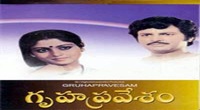
Prayatnam Full HD Movie Download
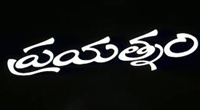
Aaj Ka Hindustani Full HD Movie Download

Tu Hi Mera Dil Full HD Movie Download
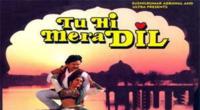
Face To Face Full HD Movie Download

Kattumarakkaran Full HD Movie Download

Jai Shree Ganesh Full HD Movie Download
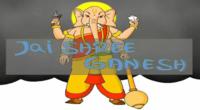
Dhanush Full HD Movie Download

Around The World In 80 Days Full HD Movie Download

Muthayamantha Muddu Full HD Movie Download

Pakkinti Ammayi Full HD Movie Download

Download latest Movie from bollywood
- 1> baaghi 3
- 2> THE SKY IS PINK MOVIE FULL STORY AND REVIEW
- 3> Luka Chuppi
- 4> TO ALL THE BOYS I’VE LOVED BEFORE
- 5> Kabir Singh
- 6> Street Dancer 3D
- 7> Simmba
- 8> Gone Girl
- 9> The Girl Who Lived
- 10> Ludo
- 11> DILWALE DULHANIA LE JAYENGE
- 12> GUILTY
- 13> The Godfather
- 14> Adventures of Rusty
- 15> Sooryavanshi
- 16> Satyameva Jayate 2
- 17> Thappad
- 18> Bhool Bhulaiyaa 2
- 19> KGFChapter 2
- 20> Mardaani 2
- 21> Pinjar
- 22> Shivaji maharaj
- 23> Ek Villian 2
- 24> Hungama 2
- 25> Divergent
- 26> Mumbai Saga
- 27> The Internship
- 28> HIT (telugu)
- 29> Panga
- 30> The perfect date
- 31> 16 December
- 32> Gopala Gopala (Telugu)
- 33> Brahmastra
- 34> Gangubai Kathiawadi
- 35> Manmadhudu
- 36> Nenu local
- 37> Mahanati
- 38> Shatamanam bavathi
- 39> Lagaan
- 40> After
- 41> MOM
- 42> Shamshera
- 43> Raguvaran BTech
- 44> Khakee
- 45> The villain
- 46> OM
- 47> Mr. perfect
- 48> Bueatifull mind
- 49> Hichki
- 50> Gabbar Singh
- 51> Jogi
- 52> Before Sunrise
- 53> Before Sunset
- 54> Before Midnight
- 55> The Big Bull
- 56> Top Gun: Maverick
- 57> The Purge
- 58> The Sky is Pink
- 59> Laxmmi Bomb
- 60> Sadak 2
- 61> Sufna
- 62> Prithviraj
- 63> PK
- 64> Coolie No 1(2020)
- 65> Black Widow
- 66> Dear Zindagi
- 67> Dil Bechara
- 68> PHIR HERA PHERI
- 69> WAR
- 70> Dostana
- 71> RRR: Roudram Ranam Rudhiram
- 72> Maidan
- 73> Dabbang 3
- 74> Chhalaang
- 75> life as we know it
- 76> SherShaah
- 77> Sandeep Aur Pinky Faraar
- 78> Event Horizon
- 79> 83
- 80> Radhe: Your Most Wanted Bhai
- 81> Gunjan Saxena: The Kargil Girl
- 82> Mr India
- 83> Vivah
- 84> Anokha Bandhan
- 85> Ghost
- 86> Bhoot: Part One - The Haunted Ship
- 87> Haseen Dilruba
- 88> Laal Singh Chaddha
- 89> Qismat
- 90> Rajput
- 91> Drive
- 92> Dil Chahta Hai
- 93> Dil Ki Baazi
- 94> Dil Ka Rishta
- 95> Teesri Manzil
- 96> Dil
- 97> Love Aaj Kal
- 98> Khaali Peeli
- 99> Bunty Aur Babli 2
- 100> Atrangi Re
- 101> Gulabo Sitabo
- 102> Jodi
- 103> Suraj Pe Mangal Bhari
- 104> Deewana
- 105> Attack
- 106> Sardar Udham Singh
- 107> Toofan
- 108> THE LOVEBIRDS
- 109> Jersey
- 110> Ginny Weds Sunny
- 111> Thalaivi
- 112> Shiddat
- 113> Angels vs Zombies
- 114> Koi Mil Gya
- 115> Thank God
- 116> Bhuj: The Pride of India
- 117> Hum Aapke Hain Kaun
- 118> The Platform
- 119> Bird Box
- 120> Roohi Afzana
- 121> Torbaaz
- 122> Nikamma
- 123> World War Z
- 124> Extraction
- 125> Train to Busan
- 126> Life of Pi
- 127> SHAADI MEIN JROOR AANA
- 128> Himmat Aur Mehnat
- 129> To All The Boys: P.S. I Still Love You
- 130> Mimi
- 131> Good Newwz
- 132> Shubh Mangal Zyada Saavdhan
- 133> Raabta
- 134> Harry Potter and the Philosopher's Stone
- 135> Harry Potter and the Chamber of Secrets
- 136> Chhapaak
- 137> War of the Worlds
- 138> Harry Potter and the Prisoner of Azkaban
- 139> Harry Potter and the Goblet of Fire
- 140> MURDER MYSTERY
- 141> Shakuntala Devi
- 142> Bachchan Pandey
- 143> Jayeshbhai Jordar
- 144> Sheer Qorma
- 145> Saina
- 146> 'O' Pushpa I hate tears
- 147> Kedarnath
- 148> MS Dhoni The Untold Story
- 149> Chhichhore
- 150> Badhaai Ho
- 151> Unstoppable
- 152> Oz the Great And Powerful
- 153> The Girl on the Train
- 154> Haathi Mere Saathi 2020
- 155> The Conjuring: The Devil Made Me Do It
- 156> Gandhi Se Pehle Gandhi
- 157> The Song of Scorpions
- 158> Srimanthudu
- 159> Hello Guru Prema Kosame
- 160> Beauty and The Beast
- 161> Black Panther
- 162> Charlie and the Chocolate Factory
- 163> Bole Chudiyan
- 164> Fidaa
- 165> Duvvada Jagannadham
- 166> Bruce Lee: The Fighter
- 167> Hyper
- 168> Yaara
- 169> Red (2020)
- 170> Shivam
- 171> That Is Mahalakshmi
- 172> Nishabdham
- 173> Aashram 2020 web series
- 174> Laxmii
- 175> Mismatched
- 176> STUDENT OF THE YEAR 2
- 177> NAIL POLISH
- 178> Ramprasad Ki Tehrvi
- 179> KAAGAZ
- 180> 12 o Clock
- 181> The Power
- 182> bolo hau
- 183> Tribhanga
- 184> JAMUN
- 185> Madam Chief Minister
- 186> Maasaab
- 187> Aadhaar
- 188> Tanhaji
- 189> Bhaagi 3
- 190> Bhootnath
- 191> MALANG
- 192> Jai Mummy Di
- 193> Haathi Mere Saathi 2021
- 194> Shakeela
- 195> Unpaused
- 196> Annayya
- 197> Vamsoddharakudu
- 198> Mrugaraju
- 199> Narasimha Naidu
- 200> Sankranti
- 201> Manasu Maata Vinadhu
- 202> Anjaane
- 203> Apaharan
- 204> Bachke Rehna Re Baba
- 205> Bewafaa
- 206> Roohi
- 207> Radhe
- 208> Zindagi Khoobsoorat Hai
- 209> Yeh Mohabbat Hai
- 210> Yeh Kya Ho Raha Hai?
- 211> The Tomorrow War
- 212> DehradunDiary
- 213> Meri Shaadi Karaoo
- 214> Matruu Ki Bijlee Ka Mandola
- 215> No One Killed Jesica
- 216> Aag Ka Goola
- 217> Eight Million Dollars
- 218> Three Hundred
- 219> Cats and Dog
- 220> Decoy
- 221> Gold Rush
- 222> You Have Got Mail
- 223> Final Destination three
- 224> Tofan
- 225> Jungle
